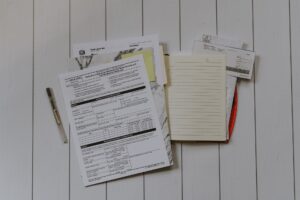Credit cards are an incredible convenience. They help people make purchases in emergency situations and allow them to pay the bill later. Being comfortable using a credit card is a necessity if you’re looking to build good credit to buy a house or get a loan in the future. However, credit cards can sometimes be a little too convenient. Over time, small charges can snowball until you’ve amassed large amounts of credit card debt. If you have multiple credit cards, figuring out how to pay all the different balances can be tricky. When this happens, trying to manage the debt can be incredibly overwhelming. One way to get out of this situation is through credit card debt consolidation.
What Is Debt Consolidation?
A big part of what can make credit card debt so complex is having to manage different balances at varying interest rates from multiple institutions. The goal of debt consolidation is to simplify all that. It involves taking your existing debts and combining them so that you only have to make one monthly payment, instead of having to make multiple payments to all your creditors. There are a few different ways of doing this, depending on your situation.
Aside from reducing the amount of work you have to do to repay your debt, there are other benefits involved as well. When you consolidate your debt, it’s possible to get a lower interest rate on the combined debt. With a lower rate, over time, you end up having to pay less. You might also be able to lower the amount of your monthly payment, making it a little more manageable for your budget.
Methods of Debt Consolidation
Continuing to accumulate debt after consolidation can worsen the situation. Here are three different debt consolidation methods to consider when weighing your options:
-
Credit Card Refinancing/Balance Transfers
One of the most straightforward methods of debt consolidation is credit card refinancing. This is the process of transferring all your debt onto one single credit card. You could use a card you already have, or you could use a balance transfer card. This means you would open a brand-new card to pay off your existing debt. Usually, new cards have low or non-existent interest rates for the first 12-18 months, making it easier for you to make your payments.
That said, balance transfer cards often have a balance transfer fee that you would have to pay to move your debt onto the new card. To ensure this method makes sense for you, you need to weigh the potential savings against the fee. If the fee ends up costing more than what you would save, then this method probably isn’t a good option.
-
Opening a Debt Consolidation Installment Loan
Another alternative is opening an installment loan. As the name implies, this involves taking out a new, personal loan that allows you to pay in fixed installments. If the interest rate is relatively low, an installment loan can help you pay off your debt in a smaller time frame. However, if you have poor credit history, you might not qualify. When you get an installment loan to consolidate debt, the terms of the loan will depend on a number of factors. In order to be successful, you will need to be committed to lowering your debt and weigh all the different options before choosing the one that’s best for you.
-
Starting a Debt Relief or Debt Management Program
Finally, you could opt into a program designed to help manage your debt. These generally have certain built in fees, but they allow you to make fixed payments with low-interest rates. For those with poor credit who are ineligible for the other methods, this can be a good solution. Oftentimes, these programs can take a longer time period for the loan to be repaid.
Regardless of which method you decide to use, getting started with the debt consolidation process is a great first step. Consolidating your debt can help you improve your credit, get a handle on your finances, and bring you peace of mind.








